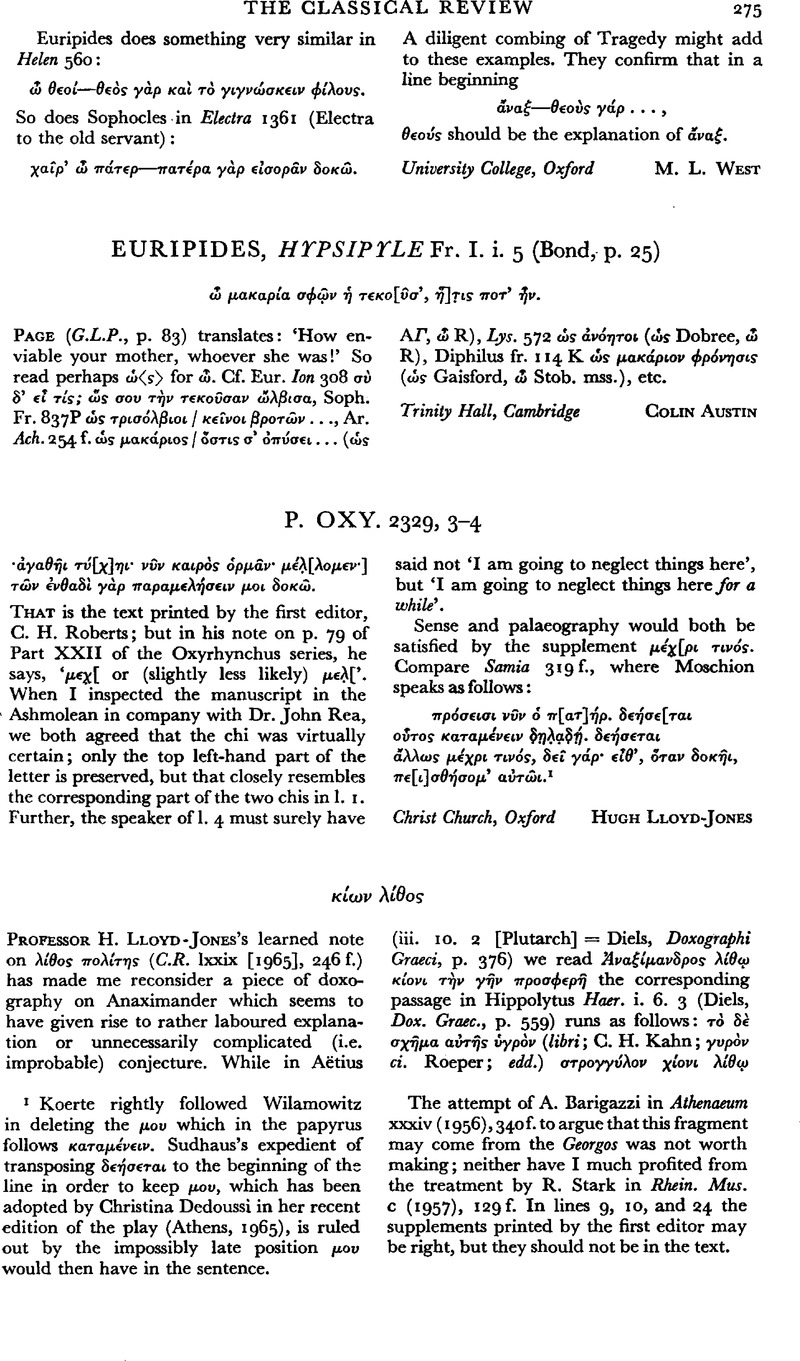No CrossRef data available.
Article contents
κíων λíθος
Published online by Cambridge University Press: 27 February 2009
Abstract

- Type
- Review Article
- Information
- Copyright
- Copyright © The Classical Association 1966
References
1 Compendium Historiae Philosophiae antiquae sive Philosophumena… (Hamburg 1706), p. 58Google Scholar, where he comments upon χ⋯ονι λ⋯θῳ: ‘Quia nullus huius vocis sensus est, malim cum auctore Histor. Philosoph. p. 32 Operum Galeni edit. Aid. legere κ⋯ονι praecipue cum Aristophanes in Νεφ⋯λαις iisdem vocibus lapidem denotat, ubi vid. Scholia.’
2 As ‘the sense of the text is not in doubt’ (Kirk, loc. cit.), it is impossible to tell which reading (or emendation) is preferred by those who give a translation only, e.g. Cornford, F. M., Principium Sapientiae (Cambridge, 1952), p. 166Google Scholar, or Guthrie, W. K. C., A History of Greek Philosophy, i (Cambridge, 1962), p. 98.Google Scholar
3 J. Neuhaeuser, loc. cit., p. 350 leaves the question undecided: ‘Quod ab Hippoly to dicitur “κ⋯ονι λ⋯θῳ”, a Placitorum scriptoribus autem “λ⋯θῳ κ⋯ονι”, nullam ipsius sententiae differentiam continet; illud enim significat “columnam, quae materiasit lapis”, hoc “lapidem, quae forma sit columna”.’




